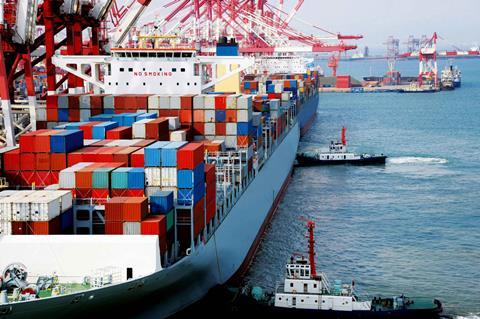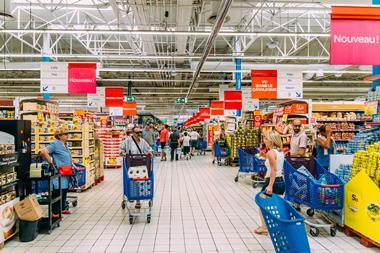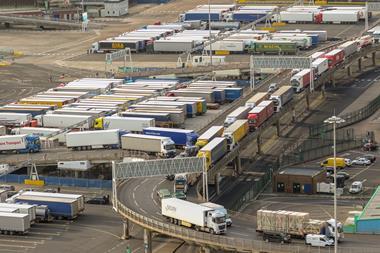Building and sustaining a successful cross-border ecommerce strategy for your company is easier than it might first appear.
When it comes to embarking on a new international strategy, particularly when faced with an environment as challenging as today, there are a number of issues to navigate, which we will address here.
Yet the journey doesn’t have to be totally uncharted – RWRC’s new report unearths the five steps that can be taken to unlock global growth.
The Ultimate Guide to Unlocking Global Growth – part two, produced in association with the Department for International Trade (DIT), evidences a sustained shift to ecommerce on a global scale.
Featuring expert opinion and data, the report highlights how retailers cannot afford to ignore the opportunities presented by the new ecommerce landscape.
For those plotting international expansion, this five-step action plan is the perfect itinerary.
1. Master international website optimisation and localisation

When it comes to localisation, rudimentary aspects such as displaying prices in native currency and basic copy translation are all well and good in the early stages of international expansion, but retailers wanting to propel overseas growth must delve beyond surface-level optimisation.
As retailers seek to develop their strategy and grow profits, they need to continue to invest heavily in web optimisation for each market, working towards an intuitive and seamless user journey for every customer in every territory.
Achieving an enhanced customer journey inevitably begins with localised consumer research and analysis.
Retailers must analyse the websites, marketing tactics and results of their most dominant competitors in their chosen market.
Meanwhile, market research will reveal crucial considerations such as consumers’ preferred social platforms, local basket behaviours, fulfilment preferences and whether the market is mobile-first.
2. Take a strategic approach to social media

A cut-and-paste approach cannot be taken to social platforms either, and retailers must approach each one differently in new markets as the popularity and usage of channels varies around the globe.
For instance, while Facebook usage is relatively universal, Instagram takes more social media market share in the US, Spain and the UK than in Germany or Mexico, according to research last year by digital marketing adviser Smart Insights.
And, of course, the content that appeals to different demographics around the world varies hugely.
3. Make use of intelligent SEO in your digital marketing

Whether at home or overseas, search engine optimisation (SEO) plays a crucial role in capturing consumer attention and nurturing leads into sales.
According to international SEO and multilingual content marketing platform Export Worldwide, there are now 3 billion internet users around the globe and 2 billion of them use mobile.
The available market is huge, but retailers must invest in international SEO if they are to stand a chance of targeting these consumers.
SEO specialist Moz says retailers should think of this as geotargeting, but instead of optimising a website to attract traffic from a city or town, it involves optimising it for different countries and languages.
To help build an internationalised site with SEO, Moz advises retailers to:
- Specify the target country and/or region with an international-friendly URL structure (country targeting)
- Establish the language that website pages are targeting with the use of language tags (language targeting)
- Create and maintain content in the language(s) of the target market
4. Prioritise partnerships for ecommerce growth
A favoured tactic among many retailers profiled in the report is capitalising on the reputations of already established online brands and marketplaces through international partnerships.
This low-cost, low-risk route to market enables retailers to test-drive their product lines in various new territories to determine whether higher levels of investment and standalone outlets should be the next move.
The pandemic has incentivised a number of retailers to review their ecommerce strategies. In April Asos reported that it had been approached by brands formerly reluctant to join its platform
The pandemic has incentivised a number of retailers to review their ecommerce strategies and consider launching on international marketplaces.
For instance, in April Asos reported that it had been approached by brands formerly reluctant to join its platform, with discussions ongoing to bring them on board.
Speaking to Retail Week, chief executive Nick Beighton said he hoped more deals with other retailers and brands would follow.
5. Be mindful of export risks

When entering any markets there will inevitably be some degree of risk attached.
From currency fluctuations and inflation, to corruption, bribery, intellectual property theft and terrorism, there are myriad threats that could affect UK retailers expanding overseas.
The risks of launching in a new market should always be weighed against the benefits that could be gained by a launch in those locations.
DIT advises that the risks of doing business in Australasia, Europe and North America are comparable with those in the UK market, but brands may need to familiarise themselves with new areas of risk if they are planning to enter developing markets.
Want to know more?
Access your free copy of the report here to gain further insight into how retailers are crafting international roadmaps in these testing times.
You’ll also uncover:
- How retailers are investing in and strengthening their cross-border online presence
- The scale of the UK export opportunity in the new ecommerce landscape
- Lessons from retail start-up Mo Bro’s on how emerging brands can fuel cross-border ecommerce






























